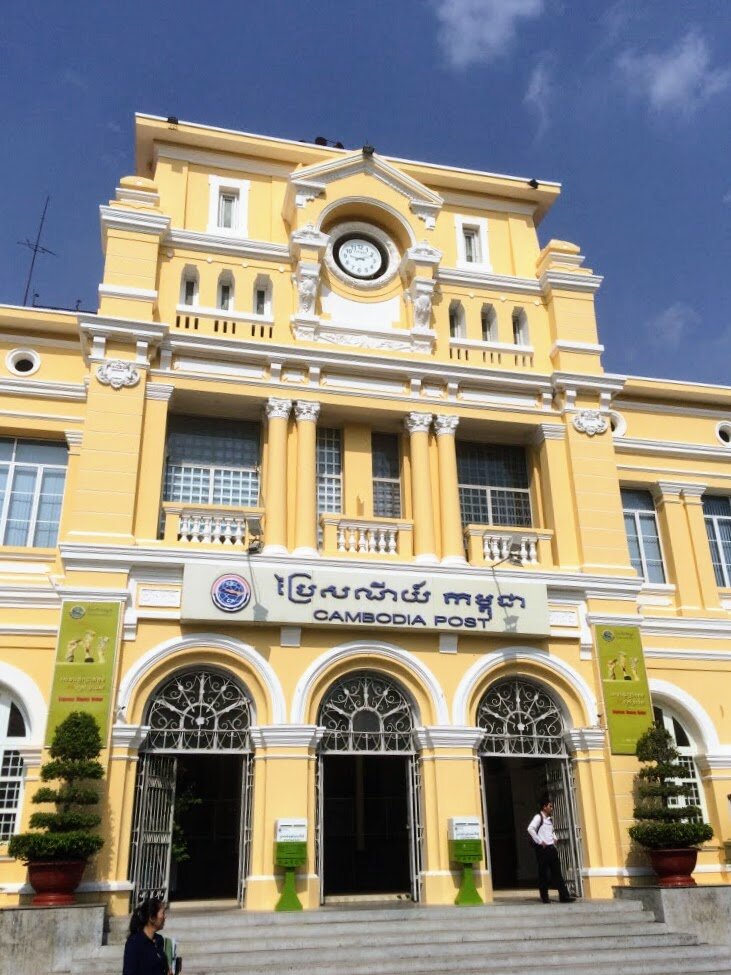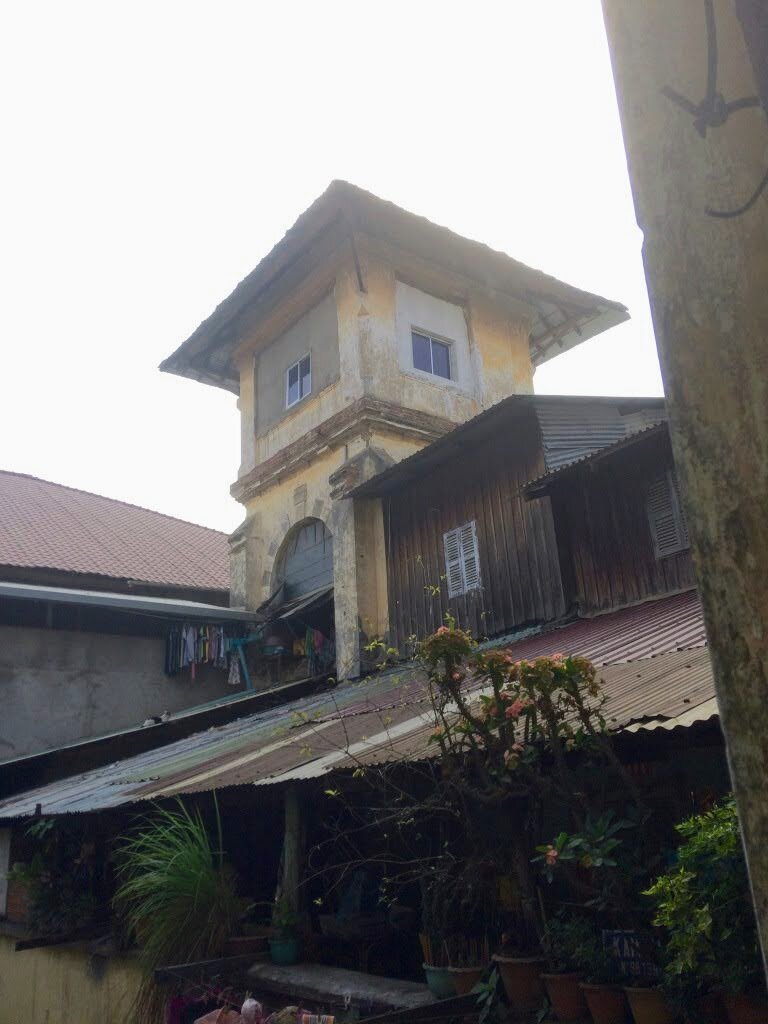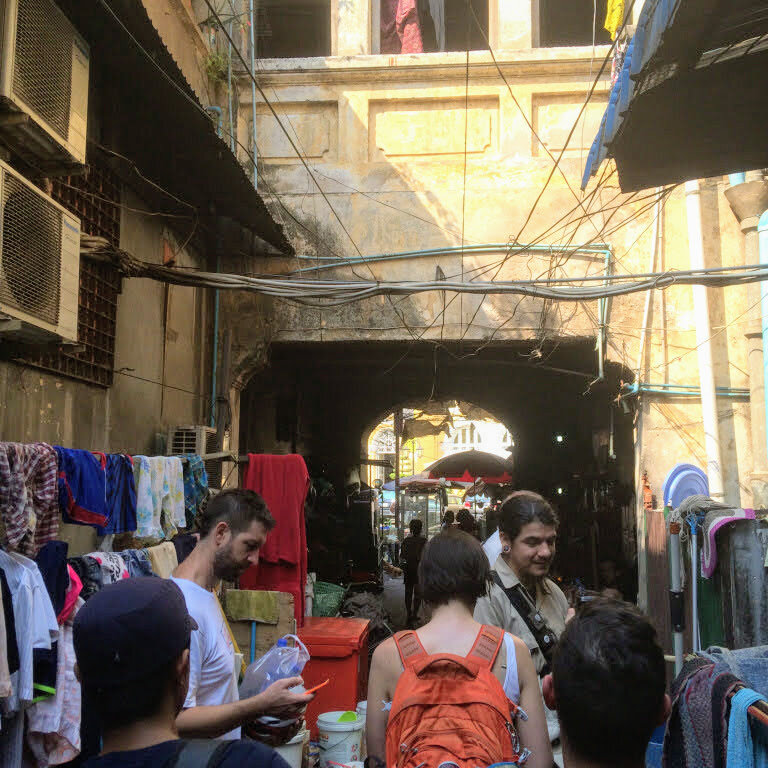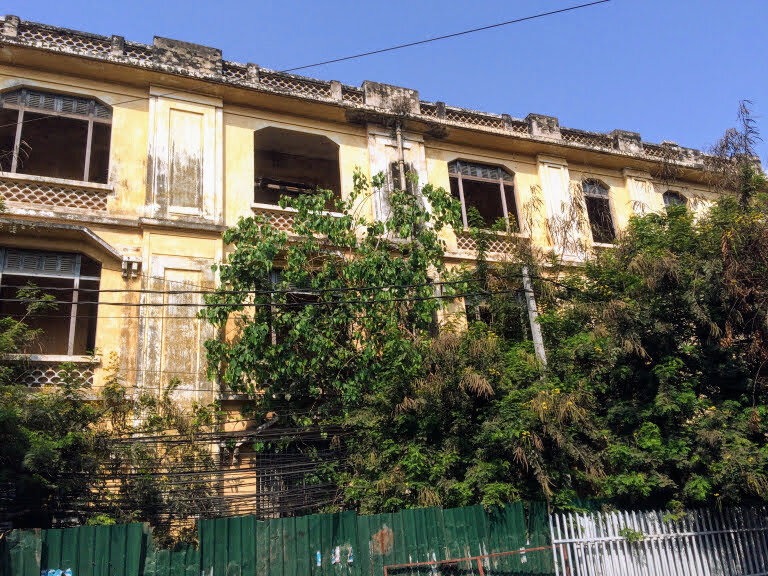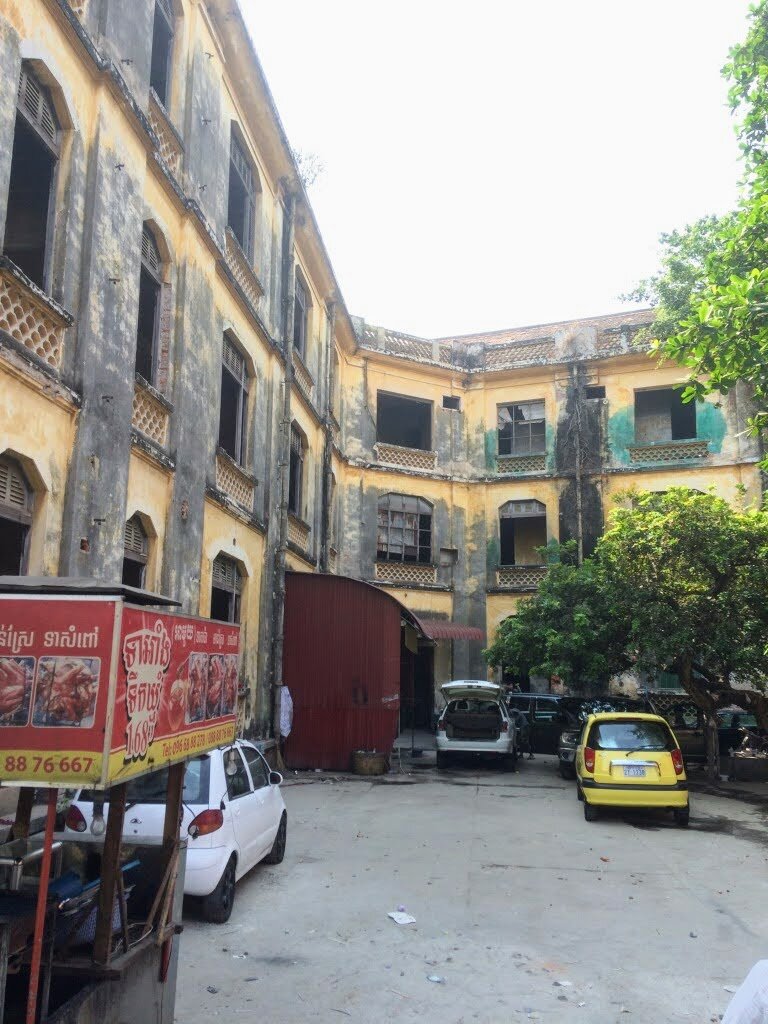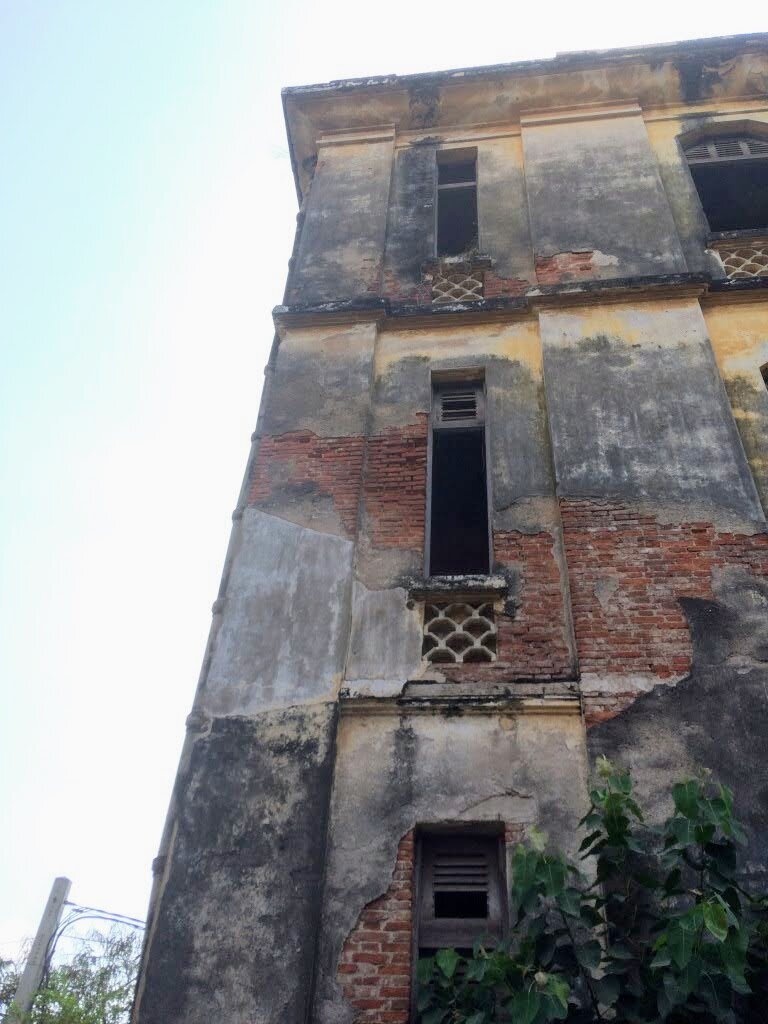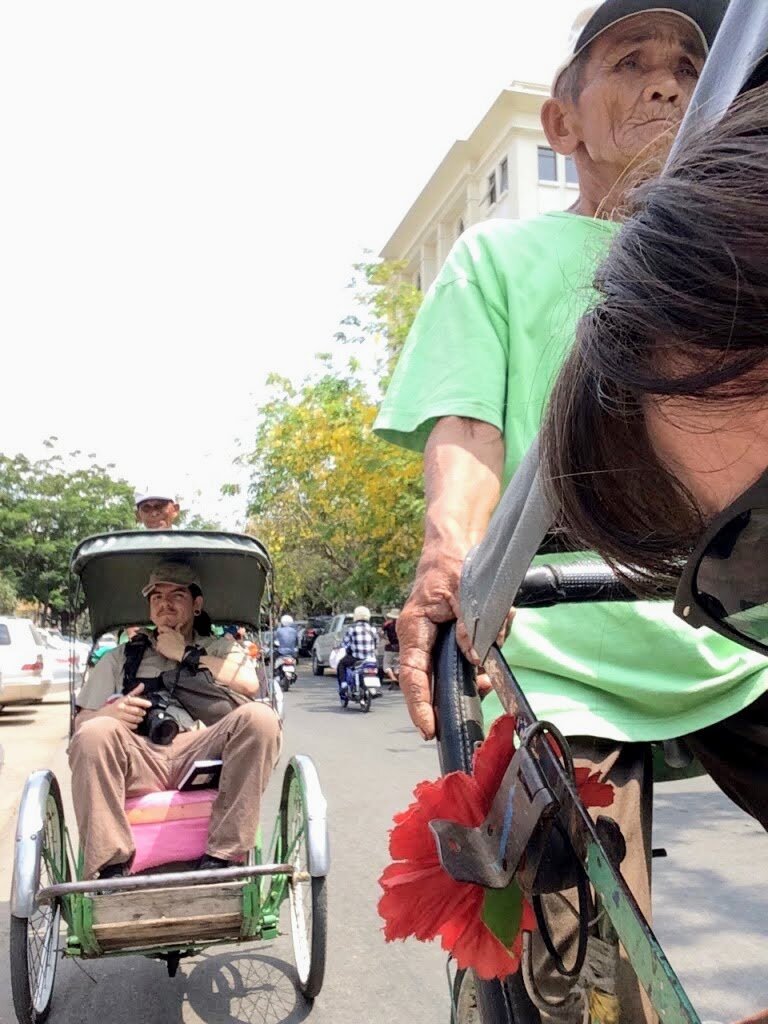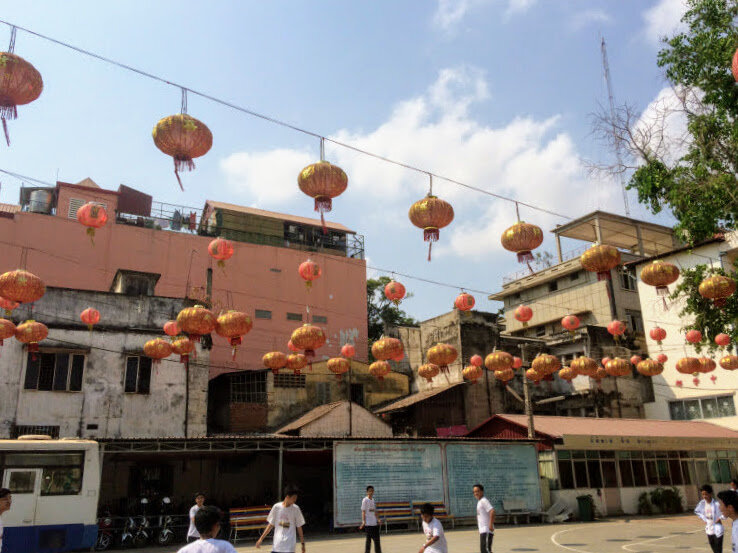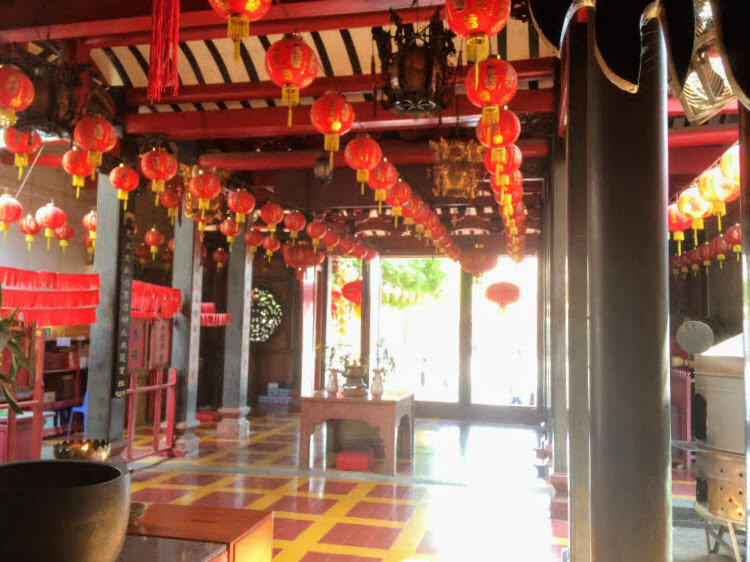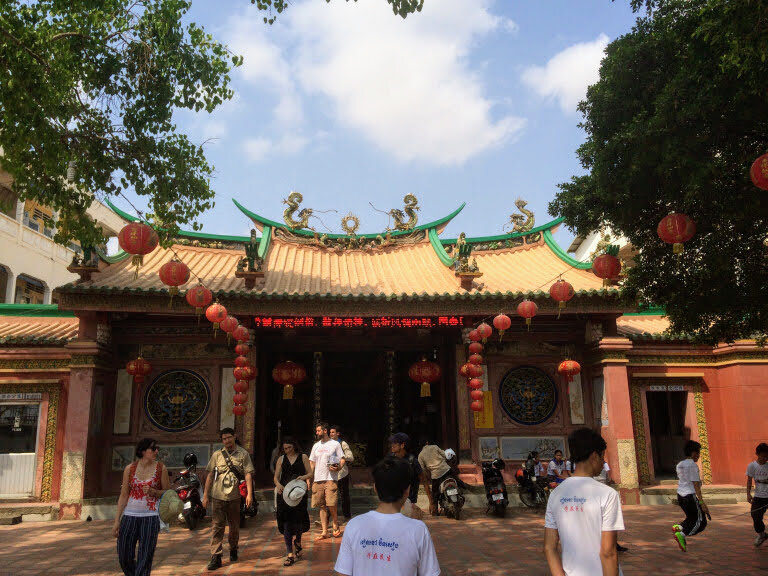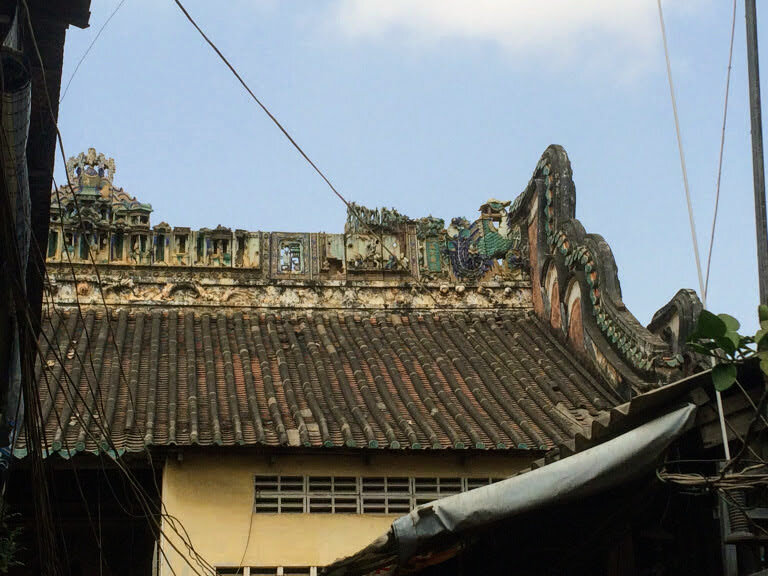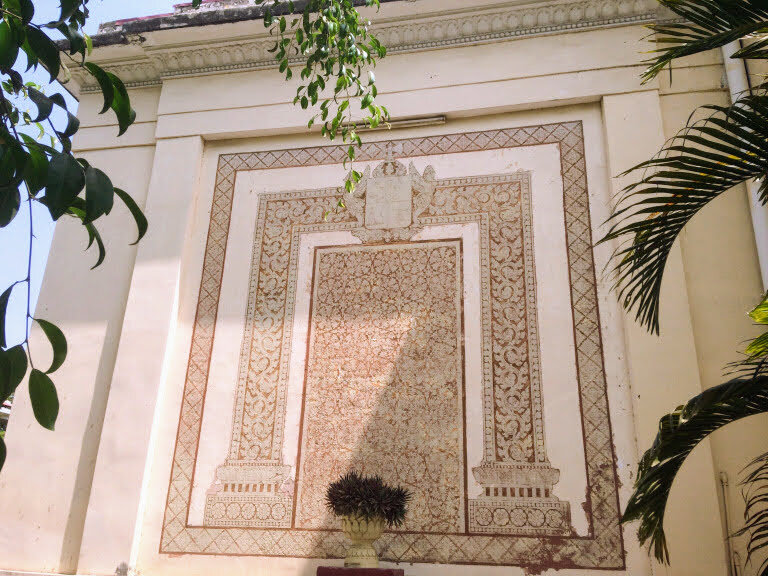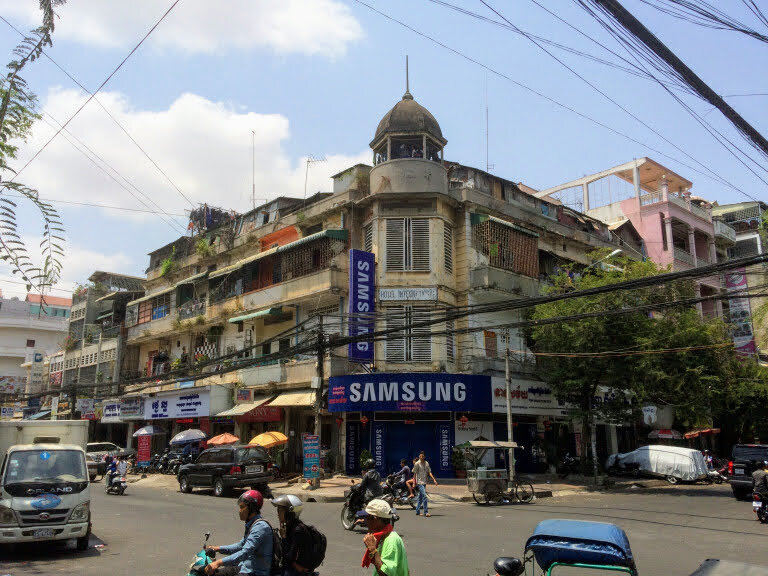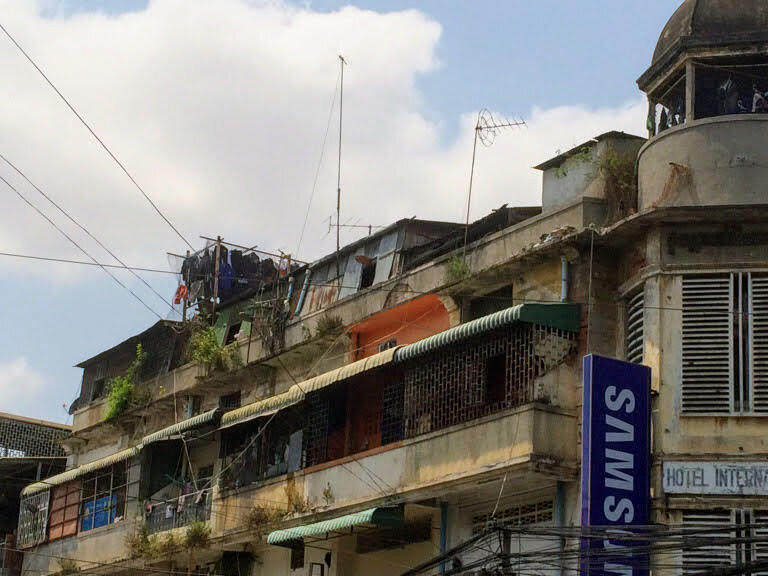Cambodia: Pagna's Architecture Tour
Architect and the program’s local coordinator, Pagna, took us on an architecture tour via cyclo (one-person cycle-seat contraptions) to orient us to the City’s historic and cultural past. Phnom Penh was first colonized by the French around 1863. Prior to that, residents of Phnom Penh were doing just fine living on elevated or floating homes along the Tonle Sap River. Tonle Sap river floods every year, and these homes would be rebuilt or repaired from lightweight and locally-available materials.
The French weren’t OK with that — colonizers often are not OK with whatever is going on when they arrive. They created canals to control flooding, and then capped the canals to create Hausmann-ish boulevards. They then segregated the city into European, Khmer, Vietnamese, and Chinese districts, and began the practice of filling the numerous lakes in the region — an ongoing practice with Phnom Penh’s contemporary real estate speculation.
First up was the central post office, the first building constructed by the French in 1895. It’s French colonial style incorporated passive ventilation. Windows were recently installed and the ceilings were lowered to accommodate the HVAC and electrical systems.
We then ventured across the street to the first hotel built in 1910. It was once a place for Europeans to stay while they conducted fancy business in their safari pants, but nowadays it is occupied by Khmer families. In 1980 when Phnom Penh was reoccupied after the Khmer Rouge terror was over, families would pick their new home and that was that…
Down the street from the hotel is the original French police station, built around the same time as the hotel. It became a factory in the 1930s, but was then a station for the military between 1979 and 2008. In 2008 it was transferred to a private bank, but there are still squatters and informal businesses in the front part of the building.
We climbed into cyclos and pedaled over to the Chinese temple, constructed in 1880. The land was donated by the Cambodian king to China. Nowadays, children that complete high school at the school here are allowed to study anywhere in China. The roof style is a combination of Khmer and Chinese.
Our next stop was the National Library and Archive, constructed in 1923 and 1925, respectively. It was a monumental and beautiful building, whose steps and murals were nods to the traditions of Angkor Wat. The French considered the Angkorian civilization to be the pinnacle of Cambodian accomplishments and held onto this history to project a shadow over the Khmer culture that they knew.
During the occupation of the Khmer Rouge, the National Library was used as the military kitchen. Livestock were kept inside, and the texts were used as cooking fuel. After Phnom Penh was reoccupied, many texts were taken to France and the US, and have yet to be recovered.
We ended our tour near the historic border of the ‘European’ and ‘Chinese’ districts, and viewed some buildings constructed in the Chinese tradition. There are informal settlements on top of some of these buildings.

